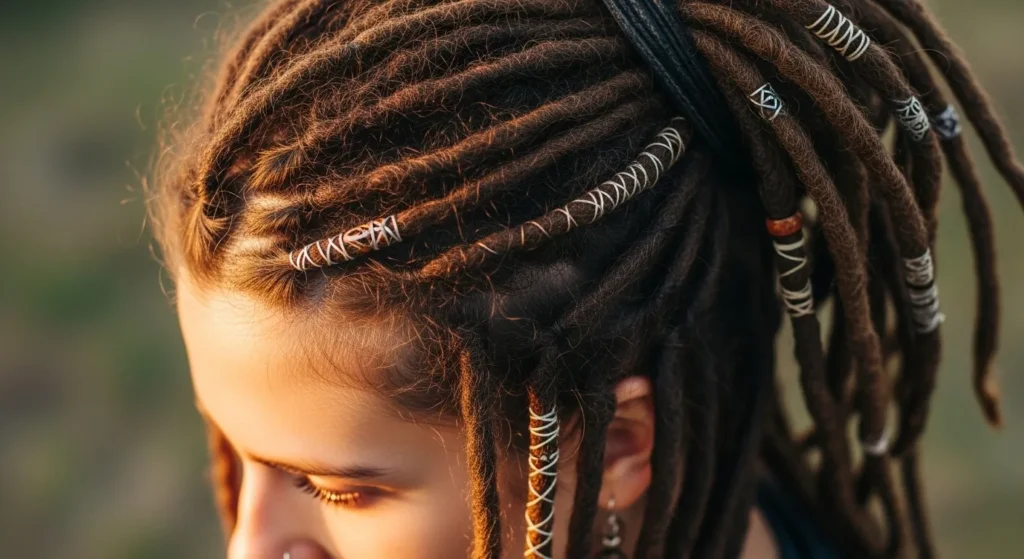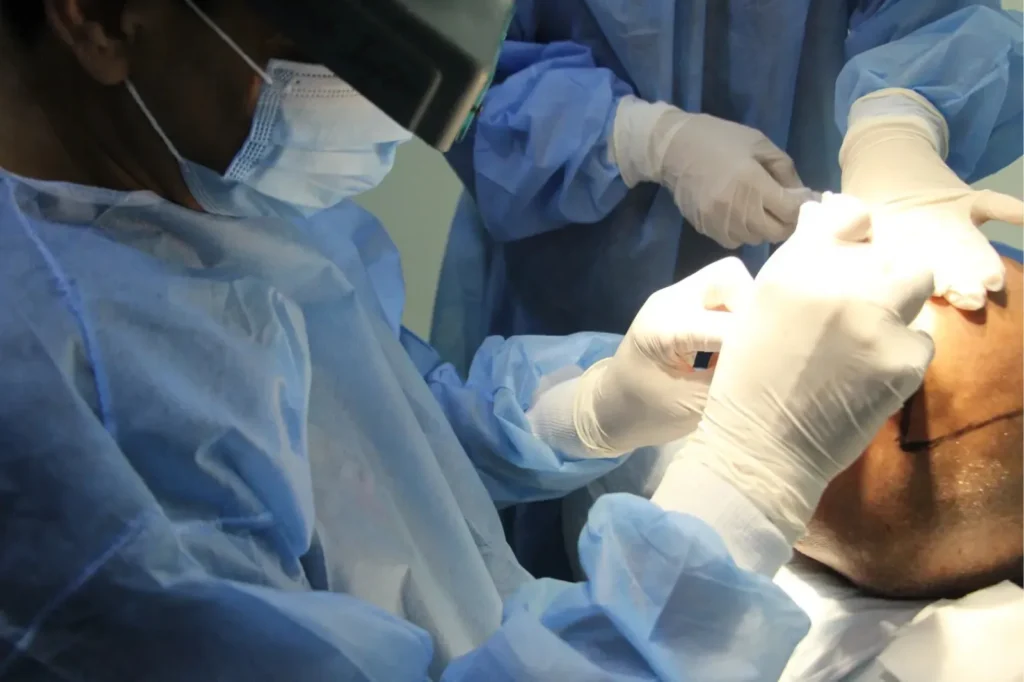Worried about Dreads Hair Loss or thinning edges from your locs? You’re not alone. While dreadlocks offer a powerful blend of style and culture, they can sometimes lead to traction alopecia, thinning, or breakage, especially when not properly maintained.
This article explains why hair loss can occur with dreads, how to prevent it, and the best treatment options available. With expert insights, patient experiences, and medically reviewed solutions, you’ll discover how to keep your dreads strong without sacrificing your hair health.
Can Dreads Cause Hair Loss?
What Are Dreadlocks?

Dreadlocks—also called locs or dreads—are rope-like strands of hair formed by matting or braiding hair over time. While they can be a symbol of cultural pride, they require specific care routines to avoid scalp issues and breakage.
Understanding Traction Alopecia and Dreads
Traction alopecia is a form of gradual hair loss caused by repetitive tension or pulling on the hair shaft. Dreadlocks, especially when installed too tightly or frequently retwisted, can exert stress on the hair follicles, leading to inflammation, damage, and ultimately permanent hair loss if untreated.
Difference Between Natural Hair Shedding and Dreadlock-Related Hair Loss
It’s normal to shed about 50–100 hairs per day. However, with dreads, shed hairs don’t fall out but remain trapped in the locs. This makes it harder to notice early signs of hair loss. Key signs include thinning at the roots, visible scalp patches, or pain and redness along the hairline.
Common Causes of Hair Loss in People with Dreads
Excessive Tension and Tight Styling
Tight installation methods or consistently pulling locs into buns, ponytails, or updos can place excessive tension on the follicles, especially around the edges and nape.
Improper Maintenance or Hygiene
Neglecting proper scalp cleansing or product buildup can clog follicles, creating a hostile environment for healthy hair growth. Mildew and scalp infections can also develop in wet or unclean dreads.
Product Buildup and Scalp Inflammation
Using heavy waxes, oils, or gels can suffocate the scalp and trigger inflammation, leading to folliculitis (inflamed hair follicles) or scalp acne, both of which can contribute to hair fall.
Underlying Scalp Conditions
Conditions like seborrheic dermatitis, psoriasis, or eczema can be aggravated under dreadlocks, especially if moisture is trapped or medications are hard to apply directly to the scalp.
How to Prevent Hair Loss While Having Dreadlocks
Best Practices for Installation
- Avoid overly tight sections or starter coils
- Consider larger sections to reduce tension
- Leave a little give at the scalp to avoid pulling
Routine Scalp Care and Cleansing
- Wash your locs every 1–2 weeks using residue-free shampoos
- Massage your scalp gently to stimulate blood flow
- Rinse thoroughly to avoid product retention
Using Lightweight, Non-Clogging Hair Products
Choose non-comedogenic oils (like jojoba or argan oil) instead of waxes or heavy creams. Look for formulas labeled “non-greasy” and “scalp-safe.”
Sleeping with Silk or Satin Headwear
Friction from cotton pillows can weaken roots. Using a silk bonnet or pillowcase helps preserve both the locs and scalp health.
Give Your Roots a Break
- Retwist no more than every 4–6 weeks
- Alternate tensioned styles with loose styles
- Avoid combining retwisting with heat or coloring
Early Warning Signs of Hair Loss from Dreads
- Thinning edges or receding hairline
- Visible scalp patches at the crown or temples
- Burning, itching, or scalp sensitivity
- Locs feeling lighter, thinner, or breaking off near the roots
- Hairline “bumps” or folliculitis along the nape
Pro Tip: Early detection is key—addressing signs of traction alopecia in its early stage may prevent permanent damage.
Treatment Options for Hair Loss Caused by Dreads
Loosening or Removing Dreads
If traction alopecia is progressing, loosening the dreadlocks—or in severe cases, removing them entirely—can relieve tension and give follicles a chance to recover.
Topical Treatments (Minoxidil)
Over-the-counter Minoxidil (Rogaine) may help regrow thinning areas, especially around the edges. It’s most effective in the early stages of non-scarring hair loss.
PRP Therapy or Microneedling
Platelet-Rich Plasma (PRP) injections or microneedling with growth serums stimulate healing and follicle regeneration. These treatments are increasingly popular for traction alopecia.
Hair Transplantation for Severe Cases
In long-term traction alopecia, especially when follicles are scarred, FUE hair transplant may be the only permanent solution to restore hair in affected areas.

Consulting a Trichologist or Dermatologist
Only a hair specialist can accurately assess follicle damage using dermoscopy or scalp biopsies. Don’t self-diagnose—book a professional evaluation early.
Expert Tips to Keep Your Dreads Healthy Without Losing Hair
Advice from Trichologists on Maintenance Frequency
- Limit retweeting to once a month
- Focus more on scalp health than appearance
- Avoid applying heat and tension in combination
Recommended Hair Products and Ingredients
- Use: Aloe vera gel, tea tree oil shampoos, sulfate-free cleansers
- Avoid: Petroleum-based waxes, heavy pomades, drying alcohols
Professional Salon Care vs. DIY Maintenance
- Salons trained in dread-safe techniques reduce risk
- DIY routines must be done gently and with the right tools
- Regular trims and check-ups help detect early thinning
When to Seek Medical Help
Identifying Severe or Irreversible Damage
- No regrowth for 6+ months
- Visible scalp scarring
- Extreme sensitivity, bleeding, or pus from follicles
What a Hair Loss Specialist Can Do
- Use scalp imaging and dermoscopy to assess follicular health
- Prescribe personalized treatments (topicals, PRP, or surgery)
- Rule out other causes like autoimmune alopecia or fungal infections
Timeline of Recovery With or Without Dreads
- Mild Cases: 3–6 months with proper care
- Moderate Cases: 6–12 months with medical treatments
- Severe/Scarring: May require transplant or long-term solutions
FAQs About Dreadlocks and Hair Loss
Can you get dreads if your hair is already thinning?
It’s not recommended. Dreads can worsen existing hair loss unless you’re under medical supervision or using protective methods.
Will removing dreads stop hair loss?
Yes—if caught early. Once the tension is removed and treatment begins, hair can regrow in areas not permanently damaged.
Are synthetic dreads worse than natural ones for hair health?
Synthetic dreads tend to be heavier and more damaging to the scalp due to added weight and chemical irritation. Natural dreads are less likely to cause breakage if maintained properly.
How long can I safely keep my dreads?
With proper care, you can wear dreadlocks indefinitely. However, regular scalp checks, breaks between retwists, and professional evaluations are essential.
Take Your Next Step
Book a Consultation With a Hair Loss Expert in Islamabad
If you’re noticing thinning, receding edges, or scalp discomfort while wearing dreadlocks, don’t wait. Book a personalized evaluation with Dr. Rana Irfan, ABHRS-certified hair restoration specialist. Learn how to preserve your style and your scalp health—without compromise.
